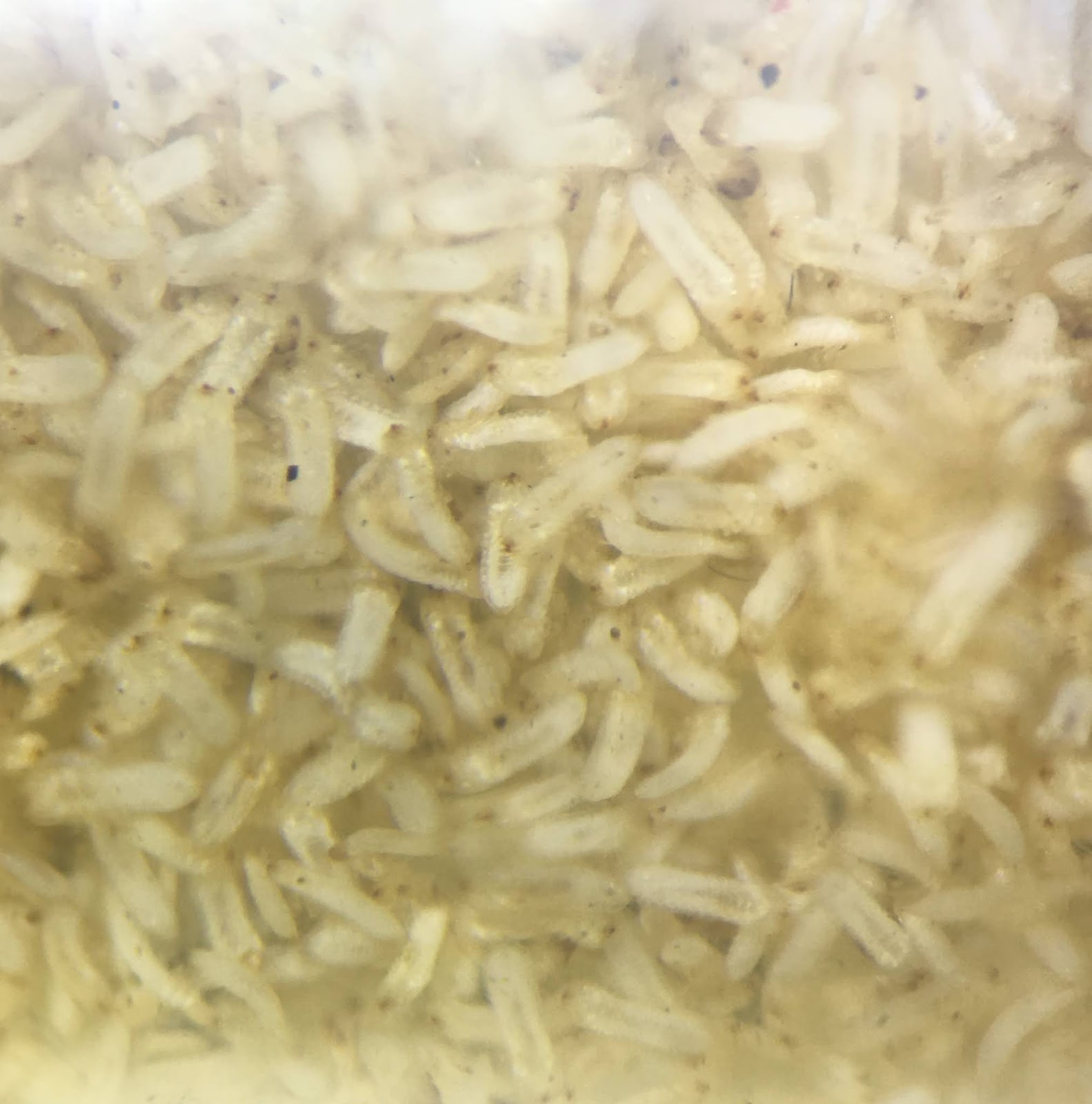According to Dr. Mike Merchant PhD, an entomology specialist for Texas AgriLife Extension insects tell fascinating stories – if you know how to read them. In a recent article he explains that the incidence of the effects from a group of beetles historically known as “plaster beetles” or “mold beetles” is on the rise. The most common of these beetles – Lathridiidae and Cryptophagidae (the Latin translation of which means “hidden feeders”) feed principally on mold spores and fungi found in building materials exposed to humidity.
Although the life cycle of plaster beetles is only 13 to 28 days, they can make a big impact in a very short time. This speed helps explains why they seem to suddenly appear without warning. They are all but invisible in their formative (immature) stages (above photo) and seemingly overnight show up with their associated damages.
The key to eliminating the plaster beetles is simply controlling the moisture. Without moisture, there are no beetles. This is often accomplished simply by completing the construction on a building and turning on the newly installed HVAC unit. Until that moisture is eliminated, plaster beetles can cause havoc in many parts of a new construction – from the aforementioned plaster to wood floors and other areas. Each contractor is likely not concerned about moisture, only getting their part of the job completed and moving on to the next task.
Besides plaster beetles, another insect that can occur in wood floors are called “wood weevils”. This is a name for beetles in the weevil subfamily Cossoninae. They too, thrive in moist and rotting wood. Treatment consists of solving the moisture issue and replacing the damaged wood. These beetles are most likely to be confused with powderpost beetles.
Depending on the damage and type of beetle you discover, s these beetles indoors. Unlike termites, these wood weevils don’t seem capable of feeding on dry, sound wood; so treatment consists of solving the moisture issue and replacing the damaged wood. These beetles are most likely to be confused with powderpost beetles, so look carefully before diagnosing.
